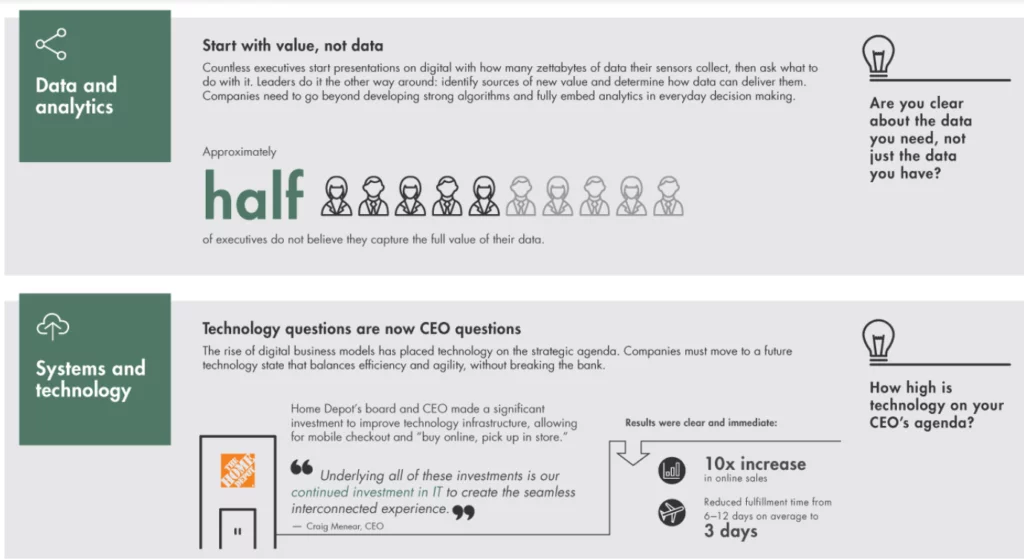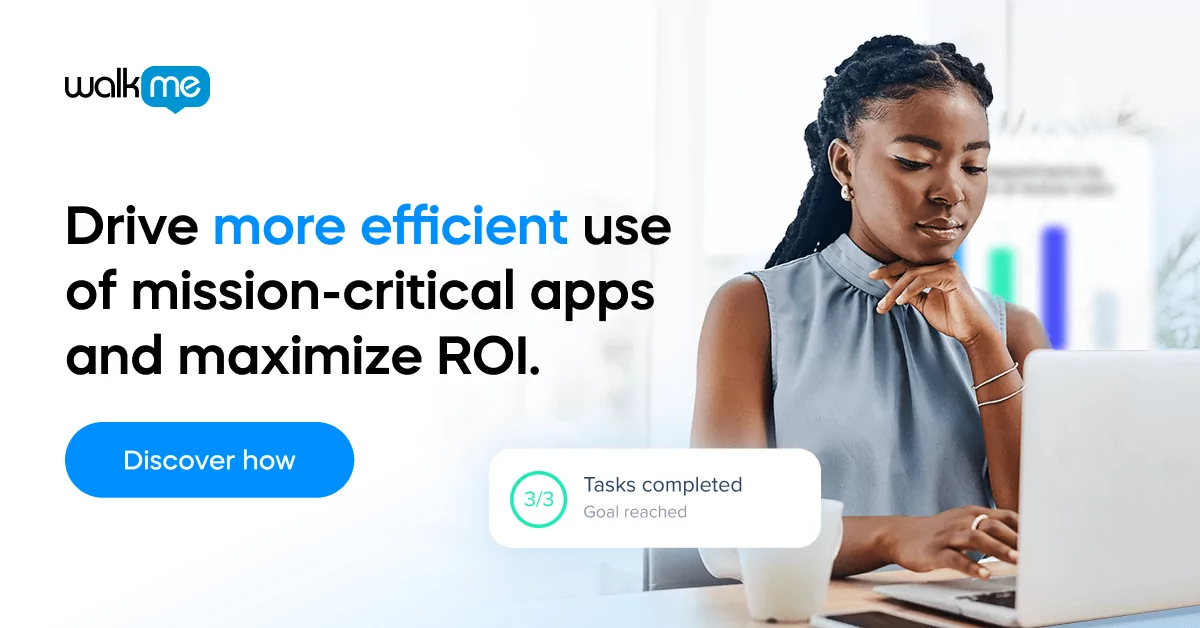When someone says the word digital strategy, marketing may immediately pop into mind. But digital strategy is the overall approach a company will take to define what type of software they invest in and how to maximize that software.
As we enter a new decade, shaping a digital strategy is more than a recommendation – it’s essential for any organization that strives to stay competitive. Enterprises of all sizes and sectors are reevaluating every ingredient of their processes, both internal and consumer-facing. Injecting digital solutions here and there is no longer enough. Businesses of tomorrow will need to build their digital strategies from the ground up.
What is digital strategy?
Digital strategy means the strategic implementation of new digital capabilities and software systems, allowing for scaled maximization of the business operations and goals. It calls for applying new technologies to existing business activities as a way of enhancing supply chain efficiency, product fulfillment, customer experience, relationship nurturing and internal alignment and management.
A robust digital strategy involves a number of components. These can include:
- Optimized and wide-ranging cloud services
- Data-driven analysis and prediction of individual customer behavior
- Web analytics to better understand company strengths and weaknesses
- A customer relationship management (CRM) platform where businesses can store current and potential customer data, track interactions and improve customer retention
- Integration of multiplatform and device communications like web, mobile, and social media
- Insight-based KPIs and monitoring of progress and results
- Internal HR systems for tracking and optimizing recruitment, onboarding, and employee records and performance
Check out this video on developing a digital strategy from CXOTalk with PwC:
An effective digital strategy is obviously contingent on the proper integration of new and emerging technologies and software platforms. The ideal strategy involves incorporating all of these elements into the greater company vision and purpose, a task so exacting that in recent years it became the main focus of one C-suite role.
A clear adoption plan is therefore crucial for digital strategy planning so that each element can be smoothly integrated and fully maximized.
Why is a digital strategy important?
Designing your strategy can make all the difference. Below are the boxes to tick to ensure a fluid and successful digital plan.
Ecosystem expectations
Going digital is no longer optional or ‘best practice’, it’s the standard for successful business strategy and organizational alignment. In a very tangible way, digital is disrupting the economic underpinnings of business as it’s always been done.
Virtually every company on the planet will increasingly require digital strategies and innovative software to accommodate the need to scale and stay agile as the landscape continues to rapidly evolve.
Avoid long shortcuts
Cutting corners and manual fixes may be comfortable in the immediate, but neither will serve you in the long run. Aside from delaying the inevitable, companies that drag their feet with digital implementation risk putting themselves at a serious and potentially irreversible market disadvantage.
Streamlined internal operations
Digital strategy begins at home, and a roster of properly adopted new software tools will eliminate a significant amount of internal bloat. Setting up the right technology to assign tasks to the right department and person, carrying out optimized training and onboarding, and streamlining cross-company communications and collaborative projects means that employees will be more available to focus on the tasks they were hired to do.

Using software seamlessly and constructively instead of constantly having to figure out or fix it makes a huge difference to productivity, employee morale and a positive ROI.
Customer interfacing
When it comes to UX, customers today expect a certain standard of digital services, communications, and connectivity. If this is flawed or absent due to lack of digital strategy, customers will notice—and so will your bottom line.
Right move, right time
Harnessing the right strategy and adoption plan will go a long way in cutting long term costs and exponentially propelling productivity. Sure, it’s an investment, and the unknown can be intimidating. But the graveyard of non-adaptive tech companies is littered with the Kodaks and Blockbusters of yesteryear for failing to pivot before it was too late… don’t let that be you!

Data management and monetization
Clarity of purpose is the cornerstone of any digital strategy initiative, and data is the cornerstone of clear business decision making.
Using correctly applied data is a key digital strategy component in obtaining valuable metrics on virtually every aspect of business, internal and external alike. The information yielded from properly managed data is one of the most important factors when the goal is to innovate and adapt.
Five essential questions for planning your strategy
The movement toward digital strategy initiation can be boiled down to 5 essential questions. Enterprises armed with the answers are already more than halfway to digital enablement:
- What is the potential impact of digital transformation in your company?
- What would your organization’s target market, vision, and goals look like if you could invest in any technology?
- What are the KPIs of each of your department’s digital capabilities?
- What are the digital tools on the market that can get you there?
- What is your digital adoption strategy for implementing and onboarding your organization’s technology?

Credit: Bain
Common hurdles and challenges to anticipate
Like any major business step, implementing a digital strategy has its share of potential hiccups. Some common challenges in propelling an enterprise toward digital often include gaps in the interconnectivity of various digital tools or lack of synchronization between business and IT goals.
Another standard hurdle involves data management and security. Enterprises must learn to implement scalable data centralization while maintaining rigorous structure and security standards without compromise.
Luckily, most of these issues can be remedied or circumvented entirely through proper planning and blueprinting, including the deployment of a digital adoption platform (DAP)
The introduction of digital tools is likely a process that began a while ago in your organization. As we move into the future, tiptoeing forward with patchwork digital fixes will no longer suffice.
For optimized and sustainable performance in everything from sales, to data management, to organizational alignment, an ambitious but practical digital solution strategy is of the essence—now, more than ever before.


